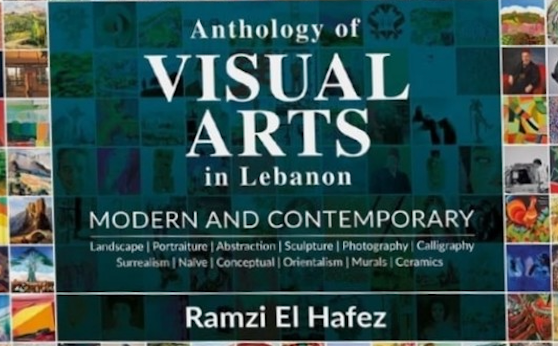An Article by AV (614 words, 3 min. read)
On October 23, 2025, the Nuhad Es-Said Pavilion at the National Museum of Beirut hosted a distinguished cultural evening under the high patronage of the Minister of Culture. The occasion marked the launch of Anthology of Visual Arts in Lebanona monumental work conceived by Ramzi El Hafez and published by Gallery Magazine (InfoPro). The event brought together a remarkable assembly of artists, collectors, curators, and representatives of cultural institutions, all gathered to celebrate a publication that honors the nation’s artistic legacy. In this refined setting, the book was unveiled not only as a documentation of beauty but as a testament to Lebanon’s enduring creative spirit.

A Chronicle of Creative Evolution
Across its twelve sections, the anthology gathers more than 350 artists, tracing a visual journey that begins in the late nineteenth century and continues into the present day. The book unfolds like a timeline of artistic evolution, revealing how Lebanese art has embraced painting, sculpture, photography, ceramics, calligraphy, and installation, while exploring movements such as surrealism and naive art.
Ramzi El Hafez offers a panoramic vision that highlights the vitality of each generation. His approach celebrates continuity rather than contrast, combining the masters of early modernism with today’s most daring creators. Each page reflects a moment of transformation, each image a fragment of Lebanon’s enduring imagination.

An Archive of Memory and Identity
Anthology of Visual Arts in Lebanon is not simply a visual collection; it is a book of remembrance. It honors the pioneers who defined the first schools of Lebanese art, the innovators who shaped modern identity, and the young artists who continue to explore new visual languages.
By assembling these diverse voices, the book transforms into an archive of the national soul. It offers a coherent view of the country’s visual culture, allowing the reader to rediscover the dialogue between tradition and experimentation that defines Lebanese creativity. Through this work, Ramzi El Hafez affirms that preserving memory is itself an act of creation.

A Necessary Work for Future Generations
This anthology is an essential contribution to the cultural and educational landscape. It provides scholars, students, and art enthusiasts with a comprehensive reference that has long been awaited. Its presence in libraries and institutions will enrich the understanding of Lebanon’s artistic identity, helping future generations to see the depth and diversity of their heritage.
It also encourages reflection on the importance of inclusion within cultural documentation.

While the selection is remarkably broad, certain artists whose influence has been deeply felt in the evolution of Lebanese art might have merited additional attention. On the other hand, the questionable inclusion of lesser-known figures attests to El Hafez’s generosity of vision, a desire to offer visibility to all forms of creativity that they have contributed to the country’s artistic journey. This balance between recognition, discovery, and flat out strict relay of information, strengthens the anthology’s richness and ensures that it remains open, diverse, and alive.
An Offering to the Nation’s Soul
By gathering so many names, images, and histories, Ramzi El Hafez has created more than a publication; He has offered a monument to the perseverance of art in Lebanon. His book brings together fragments of beauty that once stood apart and allows them to coexist within a single, luminous narrative.
Anthology of Visual Arts in Lebanon It is destined to occupy a lasting place in cultural collections and private libraries alike. It stands as a reminder that art in Lebanon has always been a form of dialogue between the individual and the collective, between memory and renewal. Through this anthology, art speaks more once in its most eloquent language: that of resilience, grace, and infinite imagination.


